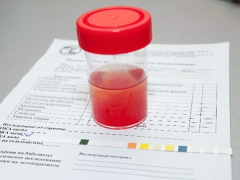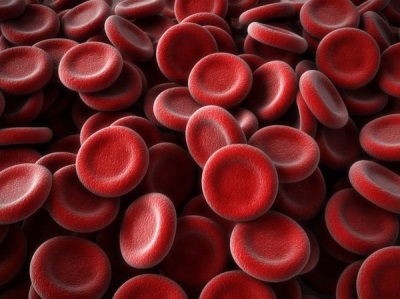Erythrocytes in the urine of a child
Changes in the analysis of the child are always alarming, especially if blood cells are suddenly detected in the urine. Why can red blood cells get into baby's urine? Let's figure it out.
What is it?
Red blood cells are called red blood cells that are responsible for transporting gases in the blood - oxygen from the lungs to all organs and carbon dioxide back to the lungs from the tissues.
In healthy children, these cells can enter the urine only in very small quantities, so identifying red blood cells in a blood sample above the norm (this symptom is called hematuria) is important for diagnosing a large number of diseases.
Kinds
Red blood cells can enter the urine in different forms:
- Unchanged. Such cells are detected in the urine with a weakly acid, alkaline and neutral reaction. They often indicate that blood has entered the urine from the bladder, ureter, or urethra.
- Modified. They may be colorless (without hemoglobin), enlarged or shriveled. Such cells are detected in acid urine and are a sign of blood entering through the kidneys.
Norm
The rates of erythrocytes detected in the urine are determined by a study that was conducted to the child. Most often, babies are prescribed urinalysis, and the remaining samples are needed only to clarify the presence of hematuria.
Study | Normal rate |
General urine analysis | Up to 2-3 in sight. |
According to Nechyporenko | Less than 1000 per 1 ml of urine. |
According to Kakovsky Addis | Less than 1 million in daily volume. |
Across amburge | Less than 1000 in minute volume. |
Types of deviations
Depending on the number of red blood cells in the urine, a deviation from the norm is called:
- Gross hematuria - if the blood in the urine is visually noticeable (the color of the urine changes), and the red blood cells under the microscope fill the entire field of view (it is impossible to calculate them).
- Microhematuria - the color of urine is not changed, but in the analysis red blood cells were detected in an amount up to 20 in the field of view of the microscope.

Causes of elevated red blood cells
All the reasons for the detection of hematuria in urine analysis are divided into two main groups - caused by diseases of the excretory system and caused by diseases of other organs.
Diseases of the kidneys and urinary tract
Red blood cells can enter the urine when:
- Glomerulonephritis;
- Urolithiasis;
- Urethritis;
- Pyelonephritis;
- Cystitis;
- Tumor processes;
- Injuries of the organs of the excretory system;
- Tuberculosis of the kidneys.

Other diseases
With general intoxication, blood cells can be excreted in the urine in larger quantities than normal. This condition is called reactive hematuria. It can be when:
- Purulent diseases of bones and soft tissues.
- SARS and flu.
- Meningitis
- Typhoid fever.
- Intestinal infections caused by bacteria.
- Sepsis.
Short-term appearance of erythrocytes in children's urine can be caused by significant physical exertion, stress or unhealthy diet. In adolescent girls, blood may flow into the urine during menstruation.
In infants
In the first week of a baby’s life, red blood cells in an amount up to 7 can be detected in the urine, since their number during fetal development in the blood of the fetus is increased, and immediately after birth, they rapidly decay.
In addition, hematuria in babies can occur as a result of colds or phimosis in boys.

What to do if the rate is increased?
With a slight increase in the number of erythrocytes, a repeated study is necessarily assigned. This situation may indicate:
- Incorrect collection of analysis.
- Short-term exposure to factors such as stress, exercise, change of diet.
- The latent course of kidney disease or the ways in which urine is eliminated from the body.
- Sluggish inflammatory diseases of other organs.
If more than 5 red blood cells are detected in the total urine analysis, the child will be assigned biochemical and clinical blood test, additional urine tests (Kakovsky-Addis test, Nechiporenko analysis), Ultrasound study, expert advice.
What is the treatment?
Having found a large number of red blood cells in children's urine, it is important to determine how the disease is caused in order to begin the correct treatment. If a kidney has a kidney disease, they may be given a special diet, anti-inflammatory drugs, antibiotics and other drugs. For inflammations of the urinary tract, treatment will also include antibiotics and drugs that reduce inflammatory processes.
In any case, a doctor should prescribe any medications to the child. This applies even to folk remedies.
False hematuria
So called the state when the type of urine suggests the idea of hematuria, and in the analysis of red blood cells in the sample are missing. The reason for the staining of urine in red color in this situation are pigments that can get into the child's body with drugs or food. For example, a baby may have reddish urine after taking vitamin B12, aspirin, phenolphthalein, sulfa drugs.
For more information on the presence of red blood cells, see the video of the Union of Pediatricians of Russia.












